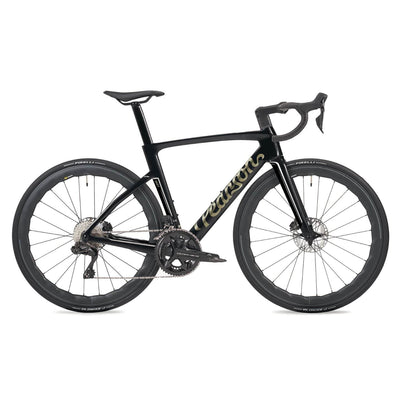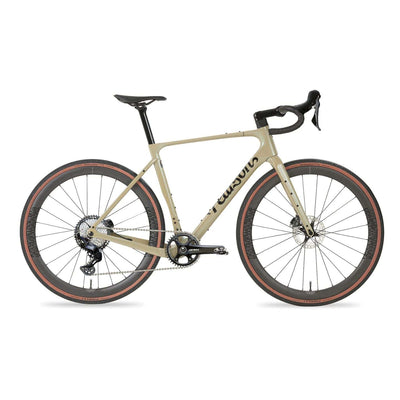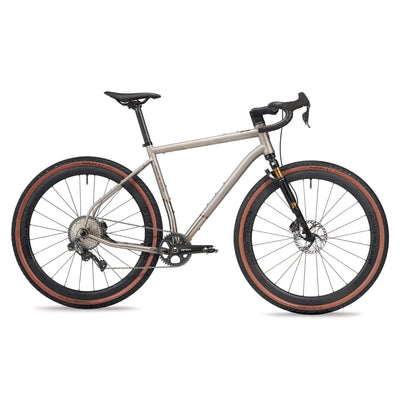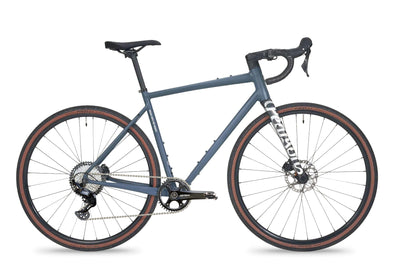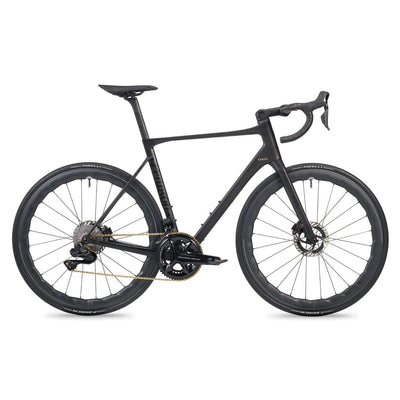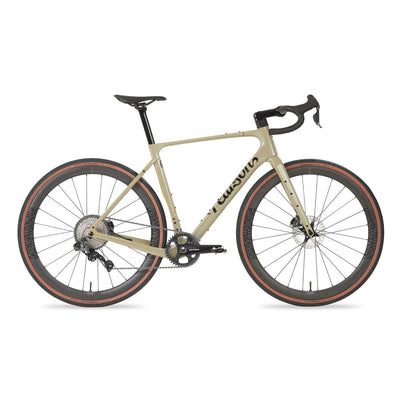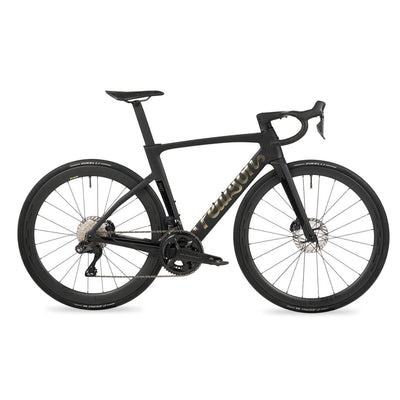How to choose the right size road bike
So you’ve decided to splash out on a new bike - we hope it’s a Pearson - and have decided what spec you want and how much you want to spend. The next thing is, what size bike do you need? There are a few ways to zero in on your perfect road bike size and we’ll run through them.
Choosing the correct bike size to fit shouldn’t really be too difficult, but it’s one of those areas where different bike makers measure things differently, so you may not be comparing like with like between brands.

Plus fashions change. The frames ridden by pros 70 years ago often look much too large to modern eyes, with hardly any seatpost showing. That’s accentuated by the horizontal top tubes and big leather saddles on bikes of that era.

Today’s pros tend to ride much smaller frames, with the seatpost pushed way up. They’ll often have an extra-long stem, so that they can get enough reach to the bars and it will usually be slammed, sitting right on top of the headset bearings without spacers underneath it. That combination will give them a low aero ride position, so they’ll experience less wind resistance when riding fast and it also weights the front wheel more for better handling but it may not be best for a more casual rider.
It might work for you too, but you may find it uncomfortable to be so low down if you’re just getting into cycling or planning longer rides. Endurance bike frames tend to have a taller head tube and a shorter reach to the bars than racing frames, to sit you more upright for added comfort on longer rides.
Different ways to measure frame size
Many road bikes are sold based on the nominal length of the top tube. That’s not always the actual length, as most modern bikes will have some degree of slope to the tube and that varies between bikes. Other brands will size their bikes S, M, L plus possibly other sizes at either end, XS, XL and XXL. That’s the system we use to size our bikes.
Yet other makers might have S/M and M/L sizes perched in the middle of their ranges and a M frame in some makes will be a similar size to a L in others. Other brands like Colnago have their own unique sizing system, so a 50s Colnago is the same size as most brands’ 54cm or medium frame.
It’s pretty confusing if you’re trying to compare bikes between brands and choose the right road bike size for you. But fortunately, there are ways to make a more direct comparison and sort out the correct size.
Ask an expert
First up, if you’re buying in person it’s worth getting advice from the shop. That might just be a question of telling your salesperson how tall you are and your inside leg measurement. Bike shops sell lots of bikes to people of all different shapes and sizes, so a good salesperson should be able to judge what’s going to fit.
But there are increasing levels of sophistication beyond this. First stop is to book a bike sizing. You can reserve a slot with our expert bike fitter Nas, either on line, by phone or via email. He’ll look at your body’s key dimensions, find out the type of riding you’re planning and recommend a bike size. Better yet, he’ll help you with saddle choice, shoe selection and cleat positioning - all really important for ride comfort. The service only costs £75 and we’ll take that cost off the price of any bike you buy from us.

You can also book a full bike fit with Nas, with a more sophisticated assessment which will include video analysis and setting a bike up to the recommended positioning.
We also offer bike fitting for women. Many bike brands are moving away from women’s specific bikes, as the average dimensions of most men and women aren’t that different, although some women may need a smaller frame. You can still fit women’s-specific components like saddles and narrower bars, which might provide better ride comfort. Again, Nas will help you get the right set-up for you.
Check the size chart
Can’t come in to choose a bike in person? Many bikes are bought over the internet unseen. Bike makers will have a size chart for each of their bike models on line - ours is under the Size Guide tab for each bike we sell.
Usually the size chart will include a height range and a recommended frame size based on this. That should work if you’re in the middle of a frame’s size range and your build and arm and leg measurements are fairly average for your height. If you’re on the overlap between sizes, we’d recommend sizing down.
A smaller frame will be a bit lighter than a larger one and will give you more stand-over, as the top tube will be lower. Stand-over is less of an issue with modern frames with sloping geometry than with old-style frames, but it’s still nice to have more rather than less.
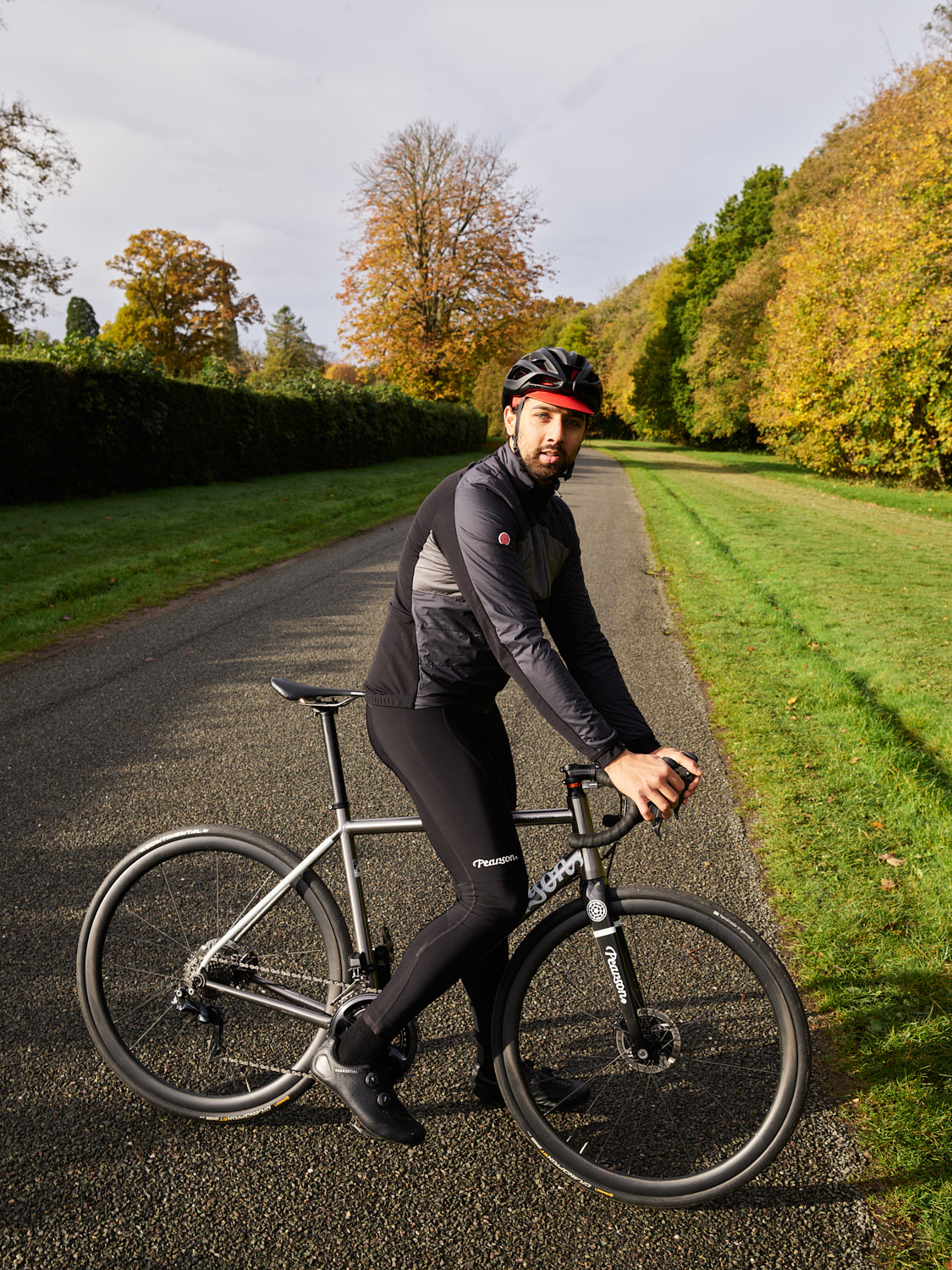
Other dimensions on the bike change too with size. The wheelbase of a larger sized frame is likely to be longer than on a smaller size one and frame angles may change. It’s particularly an issue with the smallest frame sizes, where quite large changes may need to be made to the bike’s geometry to fit around the 700c wheels which are found on the majority of road bikes, regardless of size. Toe overlap with the front wheel when turning is a particular problem and often the fork angle is decreased to avoid this, which may impact handling.
Use our site
Our sizing recommendations on our site are more sophisticated. Click on Find Your Perfect Size Bike for any of our models and a sizing window will pop up. The three step process starts with your sex and inputting your height with a slider. Next we’ll ask you for your arm length - the average for your height is pre-selected, but you can change that using the slider if yours is different. Finally, you need to input your inside leg length (you’ll have measured that if you’ve followed our piece on how to set your saddle height). Again, there’s a pre-set for the average value for your height, but you can change that.

Click Next and the recommended size for the bike you’ve chosen will come up, with an indication of where your dimensions fall within the range for that size. You can book a chat on line or a video appointment via our site if you want further advice before buying.
Adjust to fit
The good news is there’s lots of adjustability built into a bike, so you can usually set up your bike to fit you and get a similar riding position on multiple bike sizes. That includes being able to change saddle height and fore/aft position and the height of the bars, which can usually be adjusted up and down by several centimetres by adding or removing spacers.
 If you need more radical changes, on bikes with standard components you can swap out the seatpost for a longer one or one with more or less setback. You can also buy a longer or shorter stem or one with a different angle. Many stems can also be flipped to alter their angle and hence the bar height.
If you need more radical changes, on bikes with standard components you can swap out the seatpost for a longer one or one with more or less setback. You can also buy a longer or shorter stem or one with a different angle. Many stems can also be flipped to alter their angle and hence the bar height.
If your bike has a brand-specific seatpost or stem, you should be able to buy a replacement with different sizing from the maker, although it may be expensive.
Bar width usually increases with larger bike sizes and a standard handlebar is quite easy to swap for a wider or narrower one or one with a different size drop. It’s another factor which affects how your bike fits.
Combined bar/stems are more expensive to swap as they’re usually made of carbon, but again there should be multiple sizes available.
Reach and stack
Beyond the basics, there’s more that you can do to select your frame size. Somewhere on a bike maker’s site there’ll be a geometry chart setting out all the bike’s dimensions for each available size. We put ours under the Size Guide tab for each model.
Within that chart, there will usually be measurements for reach and stack. Reach is the distance horizontally between the bottom bracket and the centre of the top of the head tube, while stack is the distance vertically between them. They’re universal measurements that will apply to any bike frame, so work out what your optimal reach and stack are and you can compare like with like.
They’re numbers that will come out of a bike fit and which give you a good indication of how the bike is likely to feel to ride. A bike with a higher stack and a shorter reach will give you a more upright ride position. It’s a geometry you’ll most likely find on an endurance bike. You’ll usually find a longer reach and lower stack on a more race-oriented bike of the same size.


